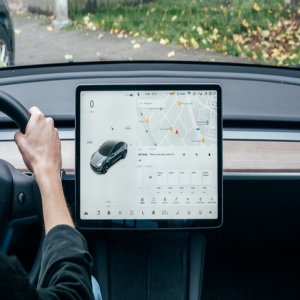
User Experience Will Shape Smart Cars
 By Alfonso Núñez | Journalist & Industry Analyst -
Thu, 03/17/2022 - 13:31
By Alfonso Núñez | Journalist & Industry Analyst -
Thu, 03/17/2022 - 13:31
As cars continue adapting to emerging technologies and digital innovations, they are starting to become smart devices of their own. Auto manufacturers are focusing on user experience as it presents opportunities to include extra services through additional costs.
The electrification of the industry will not only transform vehicle models and methods of powering transportation but create an entirely new marketing model and relationship with drivers by opening up a world of add-ons and services to improve user experience. EV manufacturers are focusing on user experience research to determine which direction future vehicles should take.
“There is no bigger disruption from a technology standpoint than automotive, when compared to every other industry. The car has been completely transformed—the experience of owning and driving a car is different. The relationship between car companies with their customers is different,” said Qualcomm CEO Cristiano Amon in January.
User experience data communicates with In-Vehicle Information Systems (IVISs) during design processes for new automotive models. Automotive OEMs, however, are behind other industries in applying data-driven methods with which future models, particularly EVs, can reach their full user enhanced-experience potential, found a study titled “Automotive UX Design and Data-Driven Development: Narrowing the gap to support practitioners.”
Proper usage of this user data could strengthen customer-brand loyalty by increasing the lifespan of a vehicle and the proper incorporation of additional services throughout the driver’s experience. EVs in particular present an opportunity as, for example, charging stations currently require drivers to manage service through several apps. This could be solved through an e-Roaming app offering services to multiple charging services.
Furthermore, incorporating payment interferences or buying services through web browsers present an opportunity for auto manufacturers to increase revenue opportunities in the sale of a single car. EVs could in the nearby future double as payment portals for several subscription services incorporated throughout the vehicle. Services include digital assistance through voice control, music and navigation features and syncing of navigation services. As EV models begin to mirror smart mobile devices, the possibilities for digital add-ons are endless. However, these must arise from personalization and flexibility efforts.
Similar to a desktop or smartphone home screen, smart cars will enable passengers to personalize the car’s settings depending on their personal preference. Beyond seat and AC adjustments, user experience expectations are changing to include different personal preferences for digital implementations.
Companies are still learning how to properly incorporate user experience data into their model interfaces. Tech auto giant Tesla received mixed user experience responses in digital innovations such as the Model S control menu’s touchscreen navigation and user-friendliness. Auto-manufacturers of all digital backgrounds must continue using user experience data collection and implementation to maximize the future of their vehicles.









